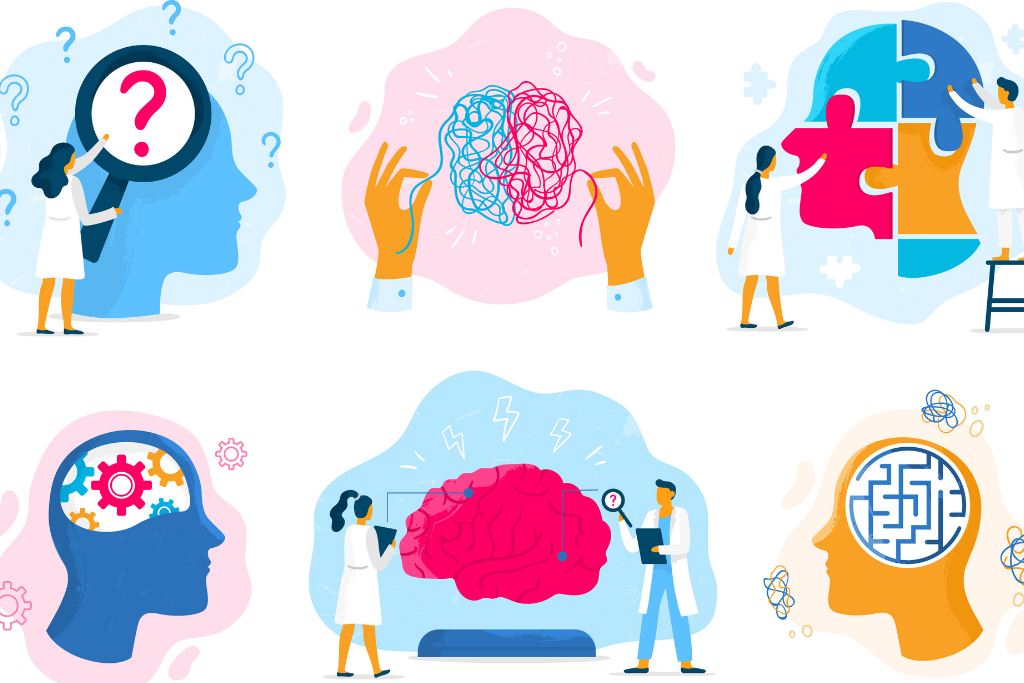Reviewed By:
You may have used "OCD" to describe a Type-A friend or even your own behavior at times. But obsessive compulsive disorder is more than just a propensity for order or tendency to worry. Here's how this mental health disorder impacts whose who suffer, and how to get help for yourself or a loved one.
Table Of Contents
A disorder as misunderstood as it is prevalent, obsessive compulsive disorder (OCD) affects about 1.2% of Americans every year. Depicted in TV shows like Monk and Friends as a quirky obsession with tidiness and order, OCD itself is no laughing matter.
Characterized by a cycle of distressing, intrusive thoughts that lead to compulsive behaviors or thought rituals, this recognized mental health disorder greatly affects the lives of those who suffer. OCD can hinder a person’s ability to work, maintain relationships, or even leave home. Here’s a look at what it means to have OCD, how it’s treated, and what you can do to help a loved one.
Understanding OCD
Obsessive compulsive disorder starts with intrusive thoughts, the “obsession” part of OCD. These obsessions lead to compulsive behaviors that provide temporary relief. Excessive cleaning, taking a “safe” number of steps to the elevator, or arranging objects on a desk in the “right” order are all coping mechanisms to deal with intrusive thoughts.
Sometimes, the coping behaviors are not obvious to others. Purely obsessional OCD, also called “pure OCD” or “Pure O,” is an informally recognized subset of OCD that does not lead to outwardly compulsive behaviors.
Although purely obsessional OCD is not acknowledged by the DSM-5, many psychologists use the term to help patients better understand their disorder. Below, we’ll look more closely at intrusive thoughts, compulsive behaviors and purely obsessional OCD.
Intrusive Thoughts
Intrusive thoughts are defined as sudden, distressing thoughts that a person cannot control. These unwanted thoughts vary widely, but they often relate to potential danger or personal distress. Common examples include:
- Fear of contracting an illness or coming into contact with germs
- Excessive worry about a potential accident, such as a house fire
- Suspicions of being followed or spied upon
- Suspicions of being betrayed by a friend or family member
- Fear of throwing things away
Intrusive thoughts may also involve violence towards oneself or others, sexual taboos, religious taboos or doubts about a person’s core identity, such as their sexual orientation. These themes are particularly common in people with purely obsessional OCD, which we’ll discuss in greater detail below.
Compulsions
Compulsive behaviors are used to provide temporary relief from intrusive thoughts. Some behaviors, such as excessive hand-washing, are noticeable to others. Others are strictly internal. For example, a person might privately repeat a word, phrase or affirmation. Below are examples of common compulsions:
- Obsessively disinfecting or cleaning
- Tapping or counting before certain activities
- Repeating an action a certain number of times
- Obsessively checking items or situations perceived to cause danger, such as the curling iron or stove
- Constantly checking on loved ones
- Developing rigid superstitions or “rules,” such as only visiting the grocery store on even-numbered days
- Developing elaborate rituals around everyday activities, such as eating or leaving the house
- Finding excuses to stay near home
Many compulsive behaviors focus on minimizing danger by keeping a person close to home, which is often perceived to be “safe.” Because of this, a number of people with OCD choose to work from home, where their compulsions are easier to manage.
Unfortunately, too much time at home alone can intensify symptoms. Indeed, studies have shown that COVID-19 has exacerbated symptoms for many people with OCD, particularly children and adolescents.
Notably, people who suffer from OCD understand that their compulsions are unreasonable. Intellectually, they know that tapping their phone twice before answering does not protect them from bad news and that washing their hands a twentieth time will not protect them from all germs. OCD sufferers therefore cannot “reason” their way to recovery, which is important for friends and family to understand.
Suffering in Secret: A Deeper Look at Pure OCD
Purely obsessional OCD is characterized by intrusive thoughts that make a sufferer doubt core aspects of their identity, such as their morality or sexuality. Sufferers typically display no outwardly compulsive behaviors. Rather, their coping mechanisms are internal.
Common themes of intrusive thoughts, also called “spikes,” include violent, taboo, or outright terrifying intrusive scenarios. The graphic nature of these thoughts and their intensity can make life unbearable for those who suffer. As with all forms of OCD, the thoughts are uncontrollable. Examples of intrusive thoughts include:
- Violence against a family member
- Incest
- Sexually graphic thoughts about children
- Suicide
- Violent self harm
- Blasphemous or distressing thoughts about God or religion
Another common theme involves sexual thoughts that are incongruous with a person’s identity. A gay man, for example, might have intrusive thoughts about women. Although people with OCD do not enjoy or act on these unwanted thoughts, many fear that their “spikes” mean something about their personalities.
This fear leads to a life of self-doubt and panic. Someone who “spikes” about children, for example, might worry that they’re a pedophile, even if they would never dream of touching a child. Psychologist Dr. Steven Phillips, an OCD specialist, offers reassurance that intrusive thoughts have nothing to do with personal identity.
“These people, like all persons with OCD, have no more inclination toward being a pedophile than any other person. It’s just that their brain is reacting to the idea that there might be danger here,” he explains.
Understanding OCD “Spikes”
Similar to a dream, the brain is using disturbing images to make a person pay attention to a subject where it senses danger, even if no danger exists.
This is one reason why OCD “spikes” become more intense during times of stress, such as during finals week at school or while preparing for a job interview. It also partly explains why intrusive thoughts can feel personal. A deeply religious person, for example, is more likely to “spike” about not believing in God than someone who has never attended church.
This interview with Dr. Phillips explains Pure O in more depth:
OCD Treatment
Treatment for OCD typically involves a combination of medication and therapy. Psychotherapy is common, but psychologists caution against only using logic-based techniques like cognitive behavior therapy. Since over-analyzing is a hallmark of OCD, trying to defeat compulsive behavior with logic can be counter-productive. A more immersive approach called exposure and response prevention therapy (ERP) is the prevailing treatment method for OCD.
In this therapy, patients learn to desensitize themselves from their intrusive thoughts, turning OCD spikes into “white noise.” They also practice choosing not to engage in compulsive behavior, first in the controlled environment of a medical professional’s office, and later on their own.
Sometimes, medication is prescribed. Selective serotonin reuptake inhibitors (SSRIs), a common antidepressant, can help to quiet intrusive thoughts.
Treatment also involves resolving co-occurring disorders, such as substance abuse or eating disorders. Substance abuse in particular commonly develops in people with OCD as a way to cope with intrusive thoughts.
Finally, recovery also means acknowledging and resolving secondary benefits. Recovery from any mental health disorder can be frightening because it means a return to everyday life in a completely new way. For those who have been out of work, for example, recovery might mean learning new job skills. An important part of treatment is developing the tools to reenter life with confidence.
Helping Loved Ones With OCD
Helping a friend or family member with OCD can be difficult. Although support and empathy is important, it can be easy to unwittingly enable unhealthy behaviors. Here are a few healthy ways to support someone with OCD in a healthy way:
- Learn about the disorder. Understanding the thought processes behind OCD can help you lend your emotional support without enabling harmful habits.
- Encourage professional help. The most effective treatment methods for OCD require the care of a psychologist or psychiatrist. The best way to help a loved one is to encourage that first step toward treatment.
- Set healthy boundaries and stick to them. Rather than enabling compulsive behaviors, such as buying soap for more hand-washing, offer to arrange an appointment with a therapist or psychiatrist. Taking this approach allows you to show consistent love and support, without abetting unhealthy behaviors.
- Help your loved one address their secondary benefits. Providing support with the practical and emotional challenges that come with recovery can be one of the most helpful ways that loved ones show their support.
Through education, empathy, and healthy boundaries, friends and family can play a powerful role in the recovery of loved ones with mental illness. OCD is an incredible challenge for those who suffer and their loved ones, but it does not need to be a life sentence.
OCD Stories & Resources
These resources and personal essays may help you understand more about life with traditional and purely obsessional OCD:
Pure O: A Rude Awakening – The Guardian
OCD: Rational People, Irrational Disorder – PsychCentral
This Is What It’s Like to Live With OCD – SELF
OCD and Substance Use Disorders – VeryWellMind
Helping to Support a Friend – Beyond OCD
OCD: Physical Sensations and Urges – ADAA
Have questions about addiction?Chat with one of our recovery specialists now.


